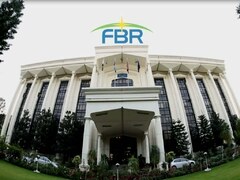New coal power plants increasing financial burden of Pakistan: Report
- “Power shortages in Pakistan tend to be due to grid issues rather than a lack of generation capacity,” said Simon Nicholas, energy finance analyst at the Institute for Energy Economics and Financial Analysis (IEEFA).
With the demand for electricity growth slowing, Pakistan is faced with the increasing financial burden of power capacity payments and overcapacity risk at a time when renewables are the cheapest source of energy available, finds the Institute for Energy Economics and Financial Analysis (IEEFA) in its latest report.
Two more Chinese-financed coal-fired plants have reached financial close so far in 2020, with more in the pipeline intended to meet overestimated demand growth projections. The report stated that the government needs to urgently rebalance proposed new energy builds against a changing power demand growth outlook post the COVID-19 lockdown.
Overall thermal power capacity utilisation (including coal plants) was just 40 percent in financial year 2018-19 according to National Electric Power Regulatory Authority (NEPRA) data. Capacity payments still have to be made to power plants that may increasingly be sitting idle post COVID-19 amidst lower-than-expected power demand growth.
“Power shortages in Pakistan tend to be due to grid issues rather than a lack of generation capacity,” said Simon Nicholas, energy finance analyst at the Institute for Energy Economics and Financial Analysis (IEEFA).
“Instead of addressing transmission and distribution issues, the government plans to continue rolling out large coal-fired stations with significant capacity payments due, according to their agreed tariff,” he added.
The report noted that ever cheaper solar and wind renewable energy tariffs don’t include capacity payments , and was of the view that the unsustainably high and growing capacity payments are making electricity more expensive and contributing to the accumulated circular debt within the power system that has now reached around Rs2 trillion (US$12 billion).
With 130 and counting financial institutions around the world already refusing to finance coal as they turn towards cheaper more sustainable renewable and alternative energies, Chinese finance is increasingly becoming the only funding source available for coal power.
“Pakistan faces the prospect of further power system debt to just one nation if it continues its plan to exploit Thar coal reserves,” says Nicholas.
He said that a switch in focus from coal to renewables would attract far more diverse sources of power finance and investment whilst reducing debt reliance on a single nation. As per the report, smaller, modular renewable energy additions, grid improvements and energy efficiency will help reduce the risk of overcapacity and avoid the further burden of capacity payments.
“In addition to being the cheapest source of new power generation in Pakistan, renewable energy also has the advantage of being able to attract a wider range of potential investors to Pakistan who now do not want to invest in coal.”
The report notes the government’s new draft energy policy represents a significant step forward for increased renewable energy ambition in Pakistan.
“Instead of locking in long-term, expensive overcapacity, Pakistan’s post-pandemic economic growth and prosperity will be better enabled by further reliance on ever cheaper wind and solar than on fossil fuel-based plants dependent on large loans that are required to be repaid quickly,” he says.



























Comments
Comments are closed.